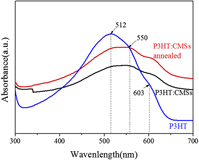Crossref Citations
This article has been cited by the following publications. This list is generated based on data provided by
Crossref.
Chen, Lin
Li, Longfei
Liu, Weifeng
Yang, Yongzhen
and
Liu, Xuguang
2014.
Preparation and characterization of thermosensitive core/shell microgels with carbon microsphere cores.
Journal of Materials Research,
Vol. 29,
Issue. 10,
p.
1153.
Chen, Lin
Li, Longfei
Zhang, Huan
Liu, Weifeng
Yang, Yongzhen
Liu, Xuguang
and
Xu, Bingshe
2014.
Magnetic thermosensitive core/shell microspheres: synthesis, characterization and performance in hyperthermia and drug delivery.
RSC Adv.,
Vol. 4,
Issue. 87,
p.
46806.
Yan, Lingpeng
Yang, Weijia
Hao, Yamin
Yang, Yongzhen
Liu, Xuguang
and
Xu, Bingshe
2015.
Optical properties of the composite film from P3HT and hydrothermally synthesized porous carbon nanospheres.
Journal of Materials Research,
Vol. 30,
Issue. 10,
p.
1599.
Yang, Weijia
Hao, Yamin
Yan, Lingpeng
Yang, Yongzhen
Chen, Yongkang
Liu, Xuguang
and
Xu, Bingshe
2016.
Deposition of Ag nanoparticles on carbon microspheres surface: Evaluation of structures, electrochemical and optical properties.
Journal of Wuhan University of Technology-Mater. Sci. Ed.,
Vol. 31,
Issue. 4,
p.
743.
Du, Xiaoqing
Liu, Jiao
Chen, Hong
and
Zhang, Zhao
2018.
Study on the Electrochemical Oxidation Desulfurization Behavior of Model Diesel on Anodic Alumina Oxide and Ceria Nanotubes.
Energy & Fuels,
Vol. 32,
Issue. 2,
p.
2612.
Schura, Aleffe Bruno
de Sá, Sankler Soares
Silva, Raigna Augusta
de Santana, Henrique
Marletta, Alexandre
and
Therézio, Eralci Moreira
2019.
Energy transfer processes in electrochemical P3HT thin films.
Journal of Materials Science: Materials in Electronics,
Vol. 30,
Issue. 4,
p.
4289.
Sulistya, Erick
Hui-Hui, Lim
Attenborough, Nicole K.
Pourshahrestani, Sara
Kadri, Nahrizul Adib
Zeimaran, Ehsan
Razak, Nasrul Anuar bin Abd
Amini Horri, Bahman
and
Salamatinia, Babak
2020.
Hydrothermal synthesis of carbon microspheres from sucrose with citric acid as a catalyst: physicochemical and structural properties.
Journal of Taibah University for Science,
Vol. 14,
Issue. 1,
p.
1042.
Vindhyasarumi, A.
Saritha, Appukuttan
Sethulekshmi, A. S.
and
Joseph, Kuruvilla
2025.
Advancements in carbon microsphere-based nanocomposites: synthesis, properties and multifaceted applications: a comprehensive review.
Carbon Letters,
Vol. 35,
Issue. 2,
p.
387.
